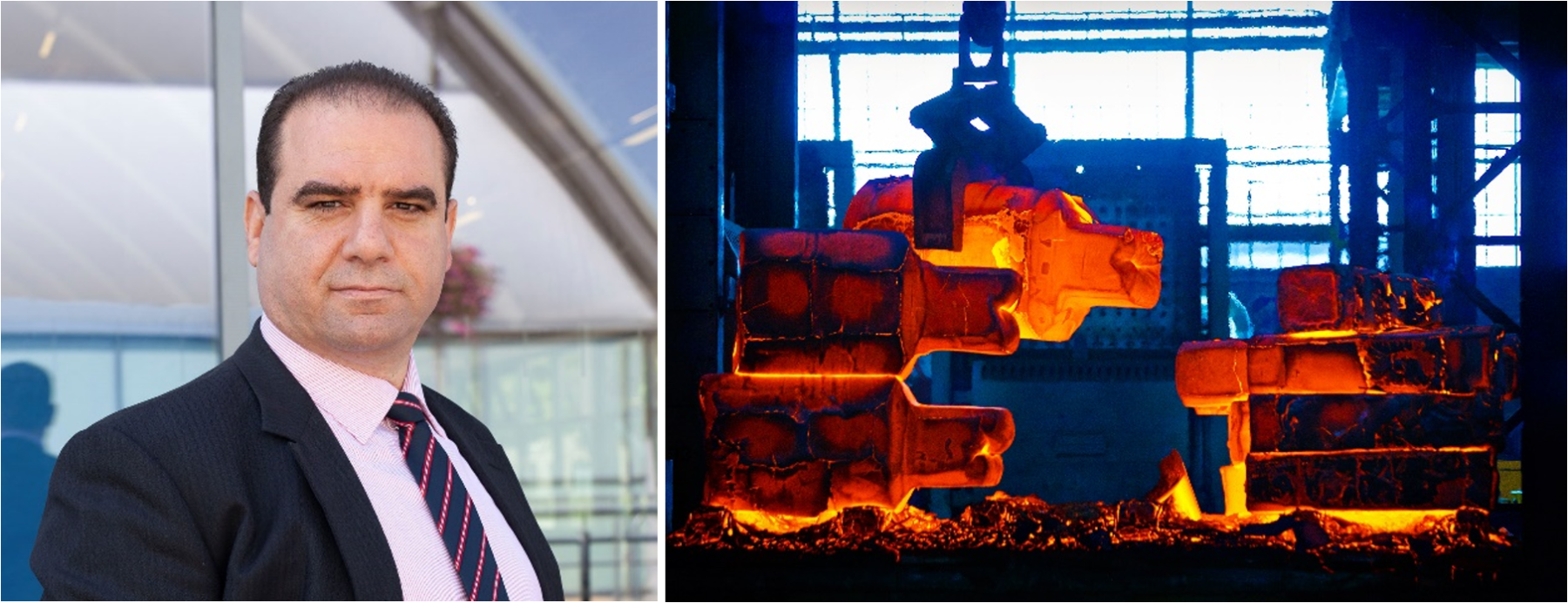Professor Hussam Jouhara from Brunel University London is coordinator of the technical activities within the EU funded research project ETEKINA. He talks about the advantages of the simple heat pipe technology for an effective waste heat recovery in energy intensive industries.
Prof. Jouhara, what is your research about?
Jouhara: My research activities in Brunel are to do with heat exchanger design with particular interest in two-phase systems for different applications that vary from waste heat recovery, to temperature control, to thermal management. That’s basically what we do.
For ETEKINA we design the heat pipe heat exchangers (HPHEs) that will be installed at three demo site units in Spain, Italy and Slovenia. After validating the design to be suitable for the different sites, they will be installed. We will also be doing an economic analysis and provide the link between the manufacturer of the system and the industrial partners at the demo sites with the support of RTDs in each location.
ETEKINA project is a success story in the making, in having one project that uses one technology for waste heat recovery applications that we can now adapt to three different industries in the steel, aluminium and ceramic sectors. Before, this was very hard to achieve – due to economic reasons.
How were you able to cut down these costs?
Jouhara: Since 2007, with the improvements in manufacturing techniques and with the advances of automation the cost of manufacturing these systems have been drastically reduced. This has opened new markets for this technology to address very challenging waste heat recovery scenarios.
When we design HPHEs we always aim at a Return on Investment (RoI) figure of less than two years, so that the end user will be able to afford it. When they invest and install this system, not only will it reduce the carbon footprint of their installation, give them back some energy otherwise wasted, make their process much more environmentally friendly, but also it will be very cost effective.
There are other systems available that are also economically interesting and to my knowledge many of the industries prefer this option. But when they have a challenging exhaust that is not suitable for waste heat recovery applications, then the heat pipe technology comes to fill in that gap. And it is still a gap in the industry as we speak.
What makes heat pipe technology so unique?
Jouhara: What is so unique about heat pipe technology is that you can facilitate the heat transfer from the heat source, to the heat sink, without having to force any fluids between the two points. So, having a passive operation is the most important aspect of this technology. This means, there is tremendous weight saving. And because these systems are passive, if you have a number of these heat pipes installed in a unit, which we call heat pipe heat exchanger, each heat pipe is a heat exchanger in its own right. The heat pipes are independent and linked thermally in parallel. If a number of heat pipes stop operating because of an external impact for example, the unit will continue operating. You don’t have a stop of operation due to this failure. We refer to it as multiple contingency. The passive operation brings huge value to this technology.
How do you face the challenges of difficult exhausts in energy intensive industries?
Jouhara: Look at the ceramic industry for example: we are dealing with flue gases containing high levels of particulates. Conventional systems tend to clog or to have big problems dealing with clearing the fouling from the surfaces. With the heat pipe design that we follow we can mitigate that. We can design the system, so it is easy to clean and under extreme conditions we can even integrate a cleaning system that will sustain the system running without having this fouling impact.
Another example: Exhaust flue gas may contain high level of toxic compositions such sulfur dioxide (SO2) and nitrogen dioxide (NO2), which they form corrosive acids once combined with oxygen and water leading to the failure of the heat exchanger system when and if they were to condense in it due to cold spots. The unique feature of heat pipes is that they have uniform surface temperature in the heat absorbing sections and in the heat releasing sections, which eliminates the presence of cold spots. HPHEs for waste heat recovery from exhaust gases can be designed to work above the dew point of these corrosive acids. This feature results in increasing the reliability and the life span of the HPHE as waste heat recovery technology.
ESCI: Who will profit from your research?
Prof. Jouhara: We are working at applications for three large industries in Europe: the steel, aluminium and ceramic industry. These are important sectors and if we can manage to address the needs of these industries from the point of view of energy efficiency, I think we will have a real big impact here. At ETEKINA we have this unique technology in the centre, with applications in these big industries. I think this project will be a successful showcase for the H2020 research programme.
